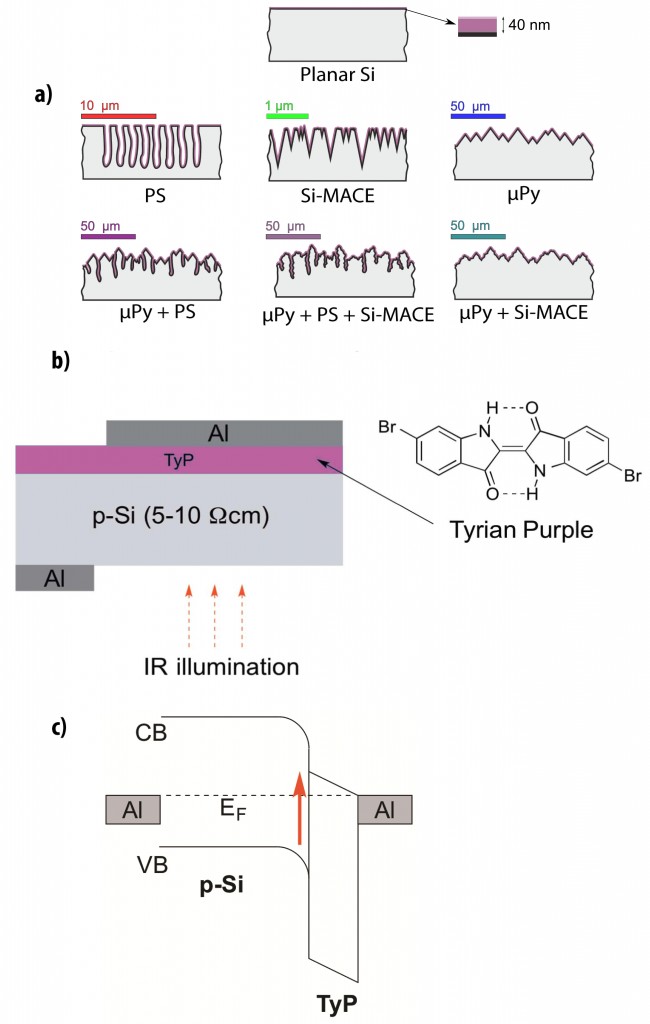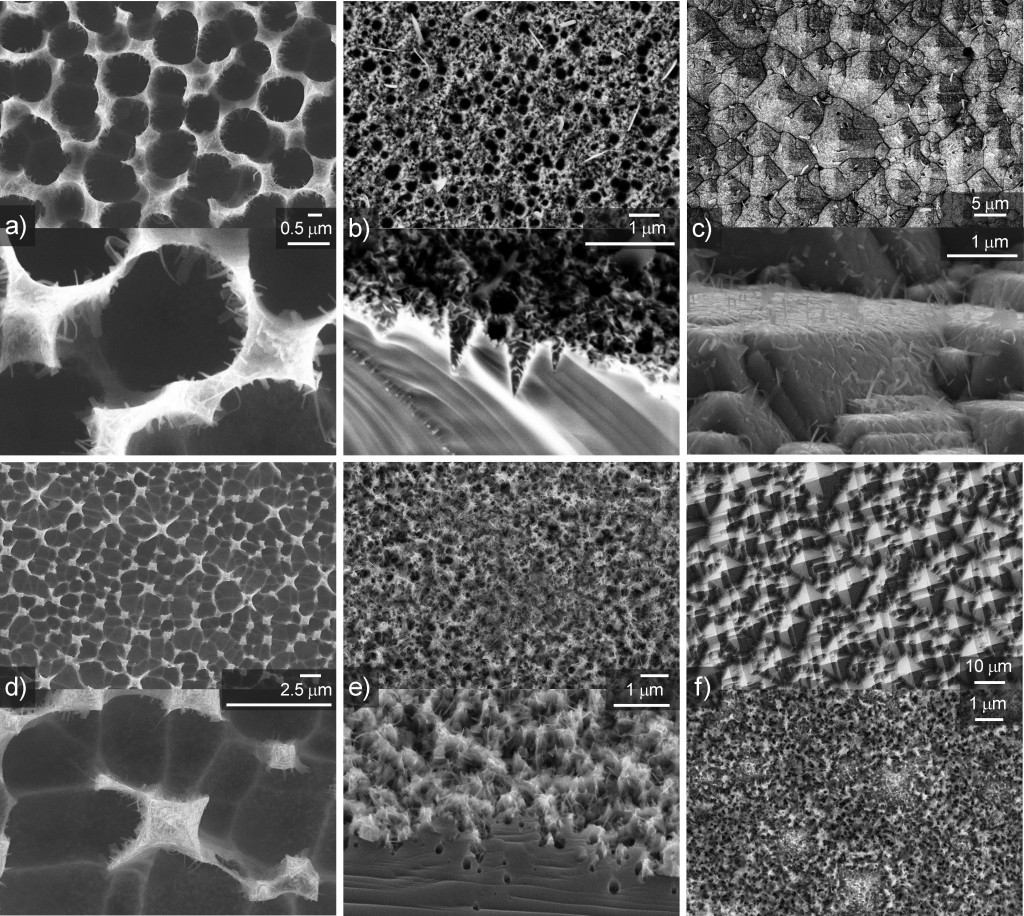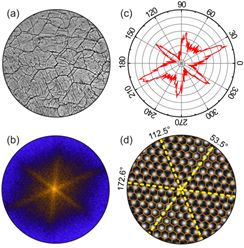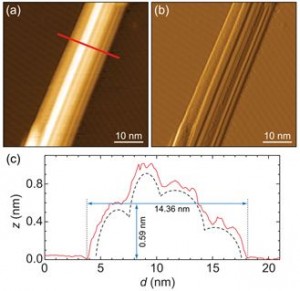Nano-naborani grafen je strukturno modificirani grafen sa širokim rasponom mogućih primjena koje uključuju senzore, elektrode, optoelektroniku, spintroniku i straintroniku. U članku objavljenom u časopisu Carbon 96 (2016) 243, I. Šrut Rakić i M. Kralj s Instituta za fiziku, zajedno s D. Čapetom (PMF) i M. Plodinecem (IRB) pokazali su da je moguće sintetizirati makroskopske grafenske uzorke s dobro definiranom uniaksijalnom modulacijom na vicinalnoj metalnoj površini, te takav grafen transferirati na dielektričnu podlogu ne gubeći pritom njegovu nano-naboranu strukturu.
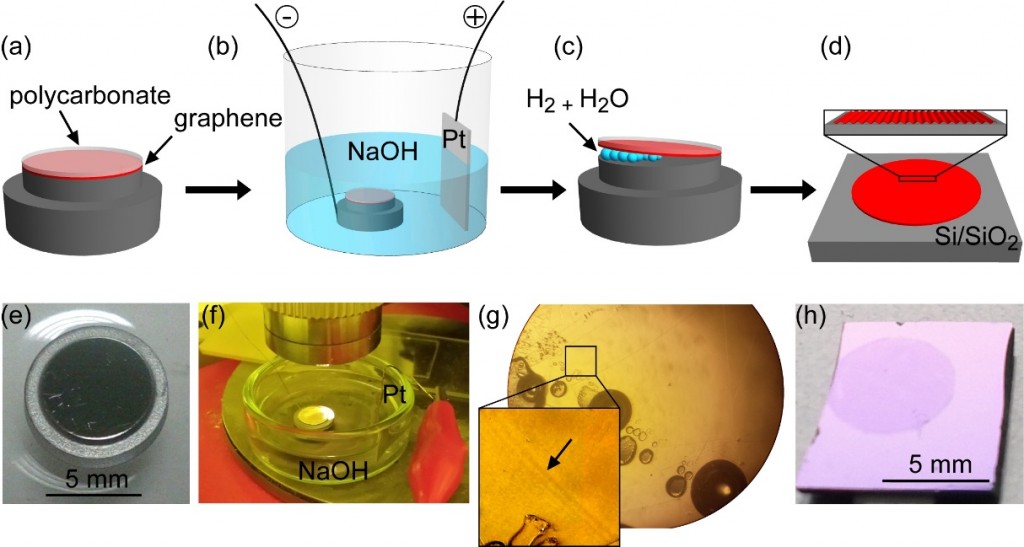
Slika 1. (a)-(d) Shematski prikaz koraka u proceduri transfera grafena. (e) Fotografija Ir(332) kristala pokrivenog monoslojem grafena nakon što je uzorak izvađen iz ultravisokog vakuuma. (f) Fotografija eksperimentalnog postava za “bubbling” transfer. (g) Slika uzorka s optičkog mikroskopa (x80 povećanje) tijekom “under-potential” tretmana. Slika u umetku pokazuje povećano područje označeno s crnim pravokutnikom gdje je vidljiva interkalacijska fronta označena strelicom. (h) Fotografija grafena nakon transfera na Si/SiO2.
Strukturno modificirani grafen je nedavno došao u fokus istraživanja kao materijal koji obećava proširivanje spektra mogućih grafenskih primjena. Ključno obilježje takvih sistema je zakrivljenost grafena koju tipično slijedi i prisustvo naprezanja. Naprezanje ima značajan utjecaj na grafensku elektronsku strukturu, vodljivost, optički odgovor te čak i na spinski transport, što se, koristeći naborani grafen, može iskoristiti za izradu ciljanih optoelektroničkih, spintroničkih ili generalno naprezanjem omogućenih elektroničkih sklopova (straintronika). Osim toga, svojstva naboranog grafena mogu se iskoristiti za razne senzore, elektrode, premaze te čak i za pohranu vodika. Važno je stoga moći napraviti uređaje i sklopove bazirane na naboranom grafenu sa dobro definiranom uniaksijalnom, 1D, periodičnom modulacijom. Ključ u izradi takvih sklopova leži u mogućnosti sinteze i transfera strukturno modificiranog grafena na željenu podlogu od interesa.
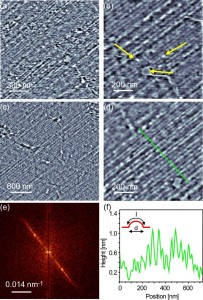
Slika 2. (a) – (d) AFM topografije snimljene na nekoliko područja na uzorku. (e) Fourierov transformat slike 2.(c) koji potvrđuje 1D uređenje s periodičnošću od 67 nm. (f) AFM linijski profil koji odgovara zelenoj liniji na slici (d). Slika u umetku pokazuje pojednostavljeni model presjeka nabora korišten za račun naprezanja.
U ovom radu pokazano je da je moguće narasti periodički nano-naborani grafen na skali od nekoliko milimetara koristeći prestrukturiranu podlogu stepenastog Ir(332). Autori su transferirali takav 1D modulirani grafen na Si/SiO2 podlogu koristeći prilagođenu metodu transfera zvanu “bubbling” (Slika 1). Ključno otkriće nakon transfera došlo je iz karakterizacije uzorka mikroskopom atomskih sila (AFM) gdje su pokazali da je grafen zadržao svoju originalnu periodičnu, 1D, naboranu strukturu (Slika 2). Prisustvo uniaksijalnog naprezanja je dodatno potvrđeno prilagodbom Ramanove spektroskopije za polarizirana mjerenja gdje se laserska polarizacija kontrolirano rotira u odnosu na makroskopski smjer nabora u grafenu. Pri tome je moguće razlučiti napregnuti i nenapregnuti smjer u grafenu (Slika 3).
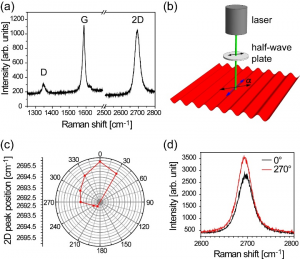
Slika 3. (a) Raman spektar uzorka grafena na Si/ SiO2 snimljen koristeći nepolarizirano lasersko svjetlo. (b) Shematski model Raman mjerenja s polariziranim laserskim svjetlom. Crna strelica označava smjer laserske polarizacije dok plava označava smjer grafenskih nabora. (c) Polarni prikaz pozicije 2D vrha u odnosu na kut polarizacije lasera. (d) Raman spektar grafenskog 2D vrha za dva kuta laserske polarizacije međusobno pomaknutih za 90°.
Način pripremanja naboranog grafena na željenoj podlozi, predstavljen u ovom članku, može se smatrati kao metoda pečata gdje se prvo grafen strukturira izborom adekvatne podloge za rast te se potom prenese na bilo koju drugu podlogu, stvarajući tako uređaj za željenu primjenu. Sama procedura transfera je brza i rezultira grafenom s uniformnim smjerom nabora, pri čemu je veličina dobivenog grafena ograničena jedino veličinom korištene podloge kristala iridija. Prednost u korištenju stepeničastog Ir leži u tome da taj sustav nudi poželjnu mogućnost kontrole periodičnosti nabora i orijentacije grafena naspram smjera nabora, te osigurava da je grafen uvijek debeo samo jedan atomski sloj. Sve to je iznimno važno za potencijalne primjene.
Ovaj rad čini značajno postignuće za CEMS u smislu međuinstitutske suradnje i upotrebe grafena na velikoj skali.

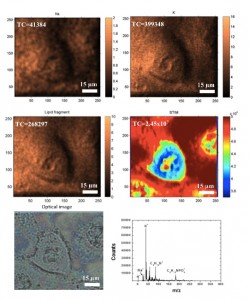
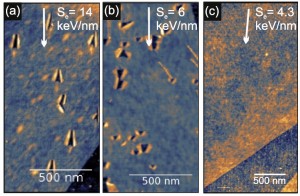

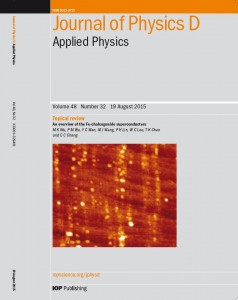
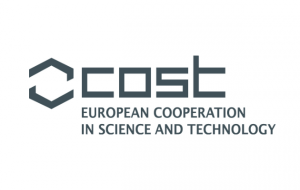 CEMS-NFM is organizing the Training School on Raman Spectroscopy for the
CEMS-NFM is organizing the Training School on Raman Spectroscopy for the 